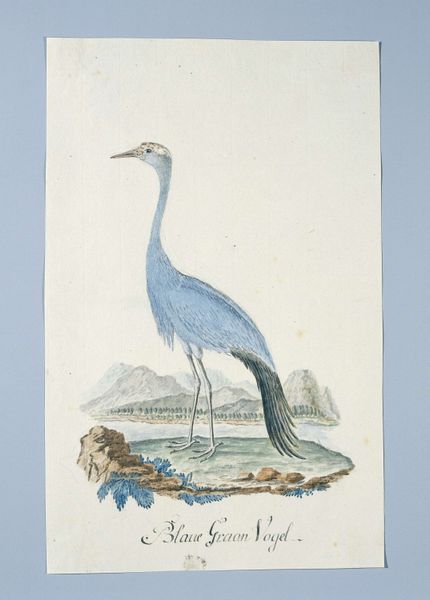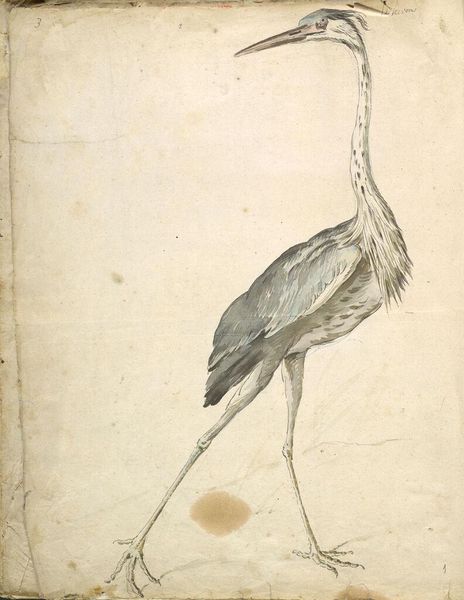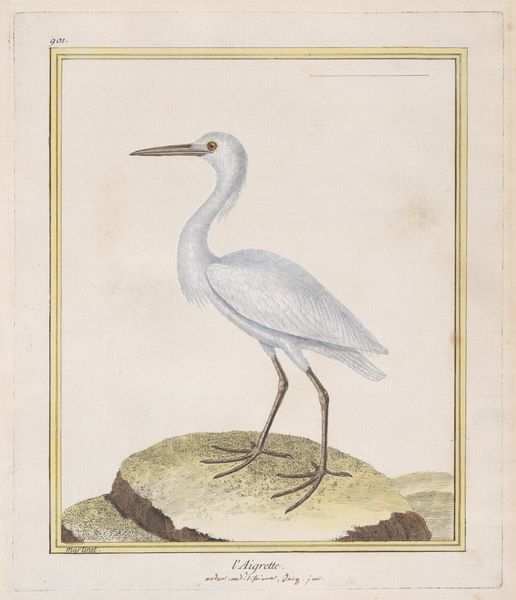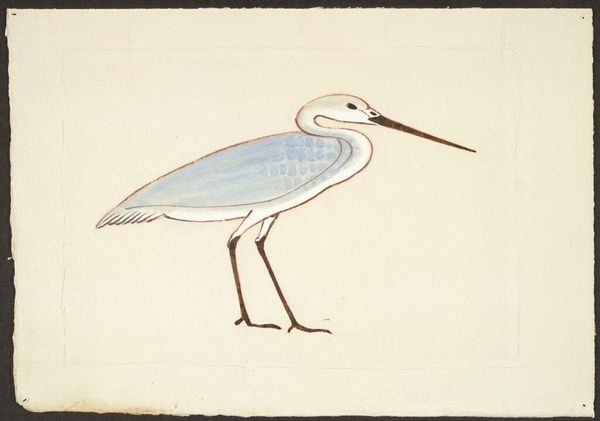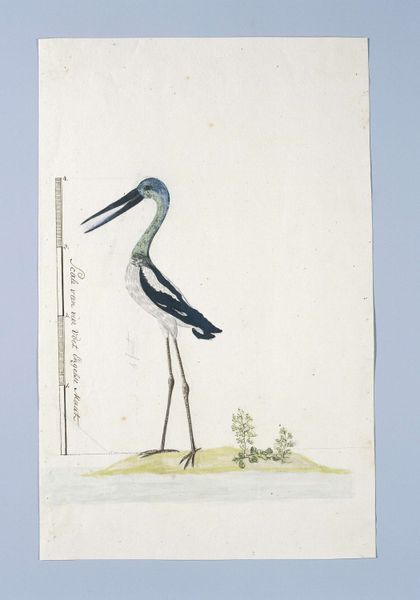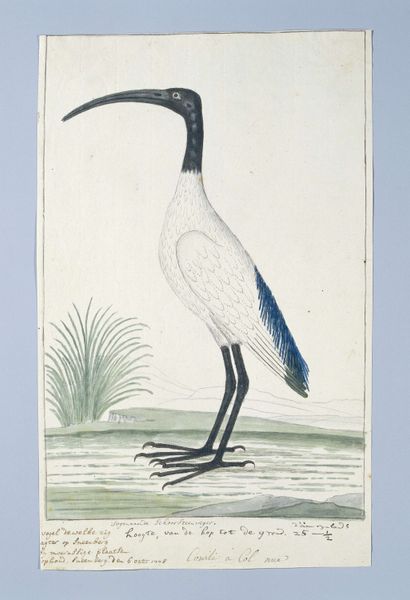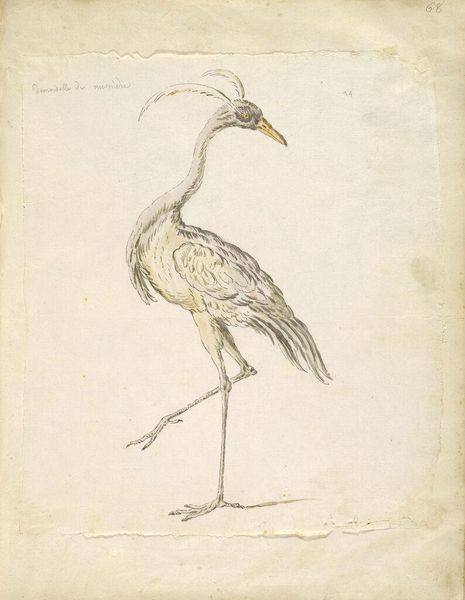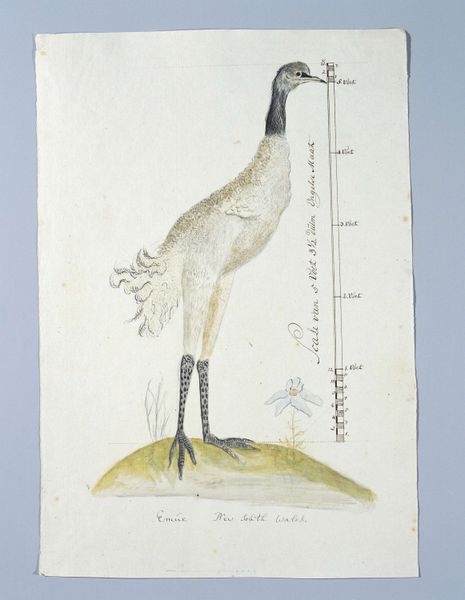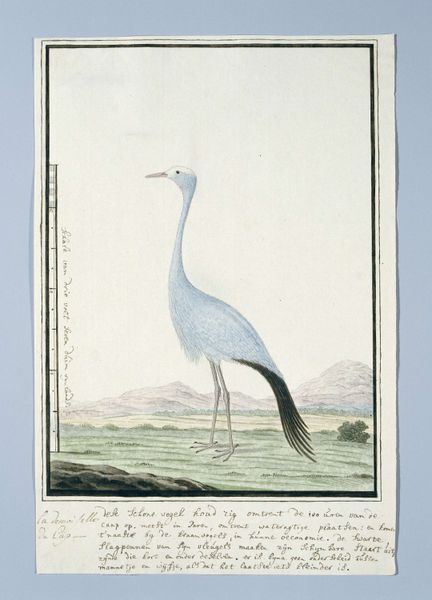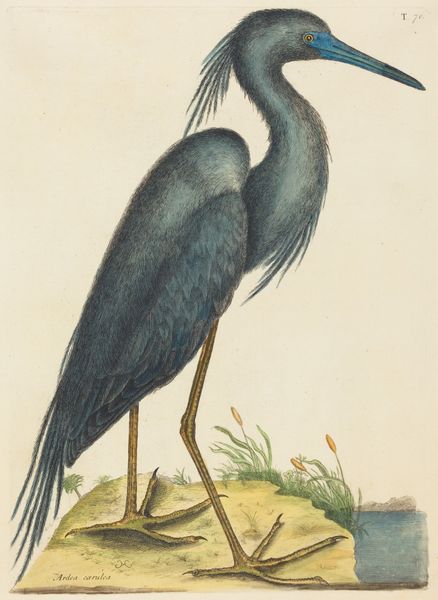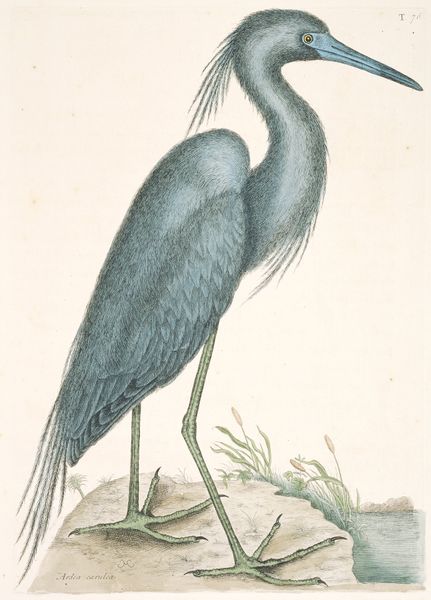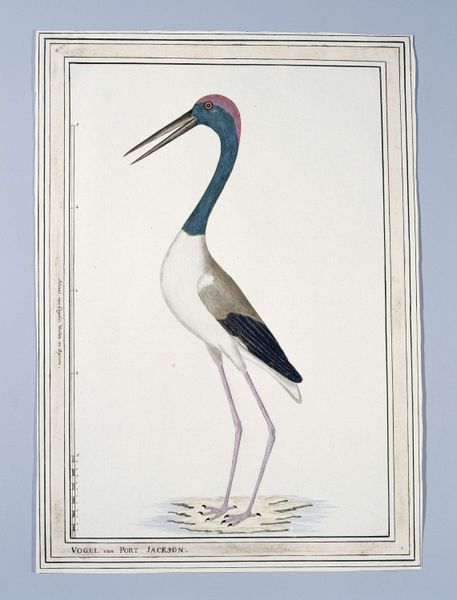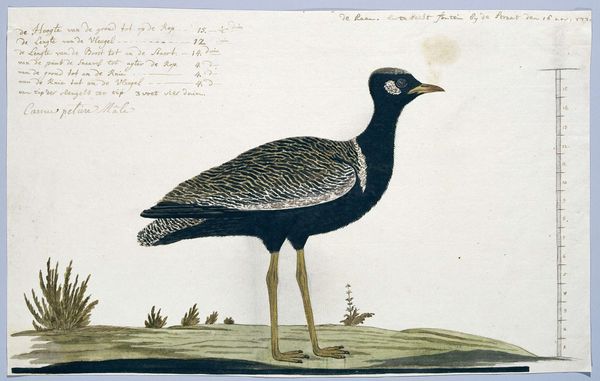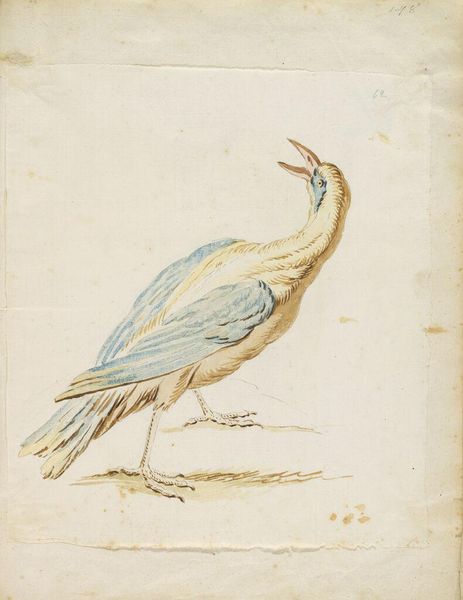
drawing, print, watercolor
#
drawing
# print
#
landscape
#
watercolor
#
watercolour illustration
#
naturalism
#
watercolor
Dimensions: height 660 mm, width 480 mm, height 390 mm, width 261 mm, height 256 mm, width 261 mm
Copyright: Rijks Museum: Open Domain
George Raper, an artist whose dates are unknown, made this image of an Antigone rubicunda, or Brolga crane with watercolour and ink. As an early image of Australian wildlife, it can tell us a lot about the complex relationship between natural science, colonialism, and art. The measured scale shows the tension between aesthetic appreciation and scientific documentation. Raper’s picture is a visual record of Australia’s natural environment, the crane’s image functioning as a specimen, classified and measured. Australia's unique fauna and flora were of great interest to European scientists and collectors. As such, the image embodies the scientific aspirations of the Enlightenment and the colonial project of cataloguing and claiming new territories. To fully understand this artwork we would need to consult both historical archives of scientific illustration, and post-colonial studies of the cultural impact of British exploration. This reminds us that art history isn't just about aesthetics, it's about understanding the social, political, and institutional contexts in which art is made and interpreted.
Comments
No comments
Be the first to comment and join the conversation on the ultimate creative platform.
